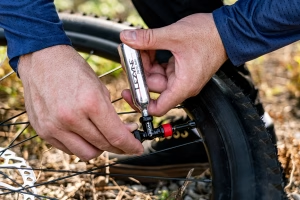Cycling makes us happy. We also get happy watching cycling, especially the Tour de France. Especially during the mountain stages, we are on the edge of our seats. We have therefore compiled an overview of the 24 most legendary cols from the Tour de France. By the way, this is not a top 24, but the mountains have been put down in random order. In fact, all these climbs are tough to climb.
1. Col de la Madeleine
The Madeleine is perfectly positioned to get from one Alpine valley to another, which is why you see this pass often included in the Tour de France. There are a legion of options for finishing after a stage in the Tour de France. Almost every French ski village qualifies. Since 1969, the Tour de France has crossed the Col de la Madeleine no less than 24 (!) times, the last time being in 2020. In 1990, Thierry Claveyrolat soloed all day in the lead through the hot French sun. It is the 11th stage of the Tour, yesterday's stage Thierry rode in the lead all day and won the stage. Thierry demares just before the top of the Madeleine to collect extra points for the polka dot jersey and comes first at the top of the Madeleine, there he decides to repeat his long solo of the day before and continues. He also tops first on the Col du Glandon, but is caught between the Glandon and the last mountain (Alpe d'Huez). At Alpe d'Huez Claveyrolat still tries to get away, but having already wasted a lot of energy on the Madeleine, he cannot get away and loses the sprint by 5. He finishes fourth, five seconds behind the day's winner Gianni Bugno.

This Alpine giant ticks just short of 2000 metres, but at 1993 metres it is rightfully an off-category climb. At the top, however, there is a sign saying 'Col de la Madeleine 2000mtr'. So in fact, this is not true. If you want to climb this col yourself, think twice. It is a hell of a climb that is steep, the steepest kilometre averaging 11%, but above all very long. There seems to be no end to the road that continues behind every bend. You can climb the pass from two sides; the toughest route comes from Feissons-sur-Isère and is a climb of over 20 kilometres at an average of 6.2%.
2. l'Alpe d'Huez
The Dutch mountain, with its famous turn 7 and the legendary victories of almost all cycling legends out there. Its 21 hairpin bends make it a real spectacle for television and its gradient of over 9% makes it a real calf-biter. The 21 hairpin bends have already seen some legendary battles. How about the victory of Peter Winnen in 1983 or the collision of Guiseppe Guerini with a fan in the last kilometre?

Every year, many Dutch and Belgian people go camping in Bourg d'Oisans at the foot of the Alp. The 21 hairpin bends are an unforgettable cycling experience that cyclists definitely want to have experienced. The climb is not particularly tough, there are enough hairpin bends to take a slight rest, but the sections between the hairpin bends are very steep.
3. Le Mont Ventoux
With a nickname like 'the giant of Provence', Mont Ventoux no longer needs to prove itself. 15 times the Tour de France passed over Mont Ventoux, 9 times the finish of a tour stage was at the top of the bare mountain. The Tour de France has a crazy preference for the approach to the summit via Bedoin (14 times), while the climb from Malaucene is at least as tough! Perhaps a tip for the tour management!
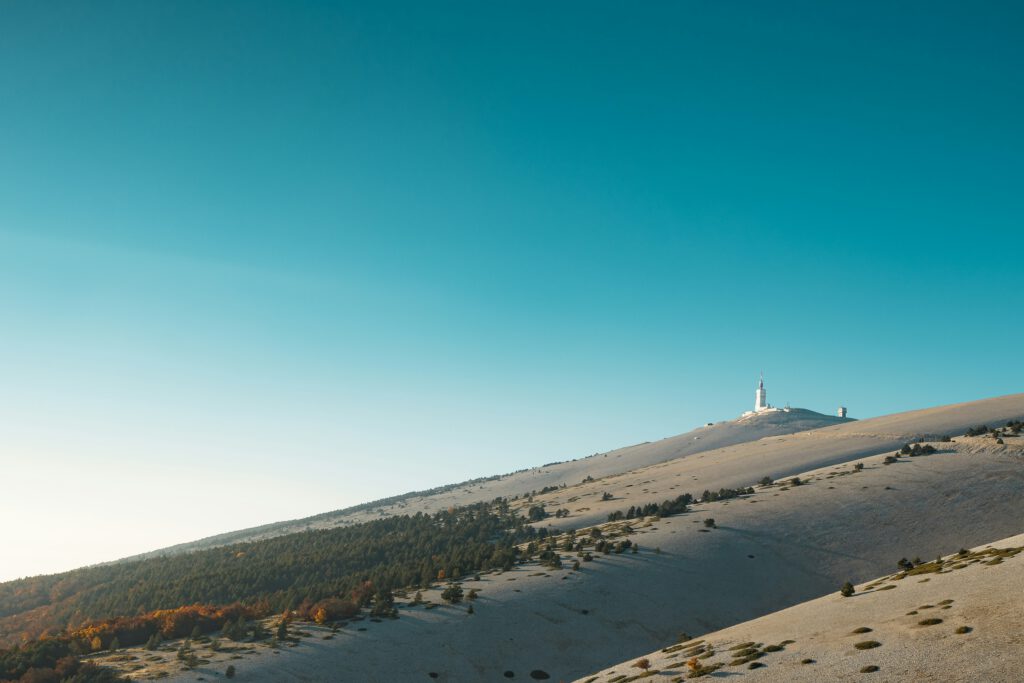
4. Col du Tourmalet
The Tourmalet is the mountain most frequently climbed during the Tour de France, no less than 84 times (including arrivals at La Mongie). This pass is an important route through the Pyrenees and is therefore included in the tour route almost every year. If you want to climb this mountain during your cycling holiday, you will therefore encounter a lot of traffic. So you have to be careful on the descents! So pay attention. Helmets on and staying well fresh are the motto.
5. Col d'Aubisque
Like the Tourmalet, the Aubisque is a true classic Pyrenean giant. As many as 73 times it has been climbed during the Tour de France, the first time it was climbed in 1910. François Lafourcade was the first rider to pass the summit of the Col d'Aubisque on a bicycle during the Tour de France. Later, not only would thousands of professional cyclists follow him, but millions of amateur cyclists also made the effort to cycle to the summit. The climb itself is not too tough, but mostly very long.
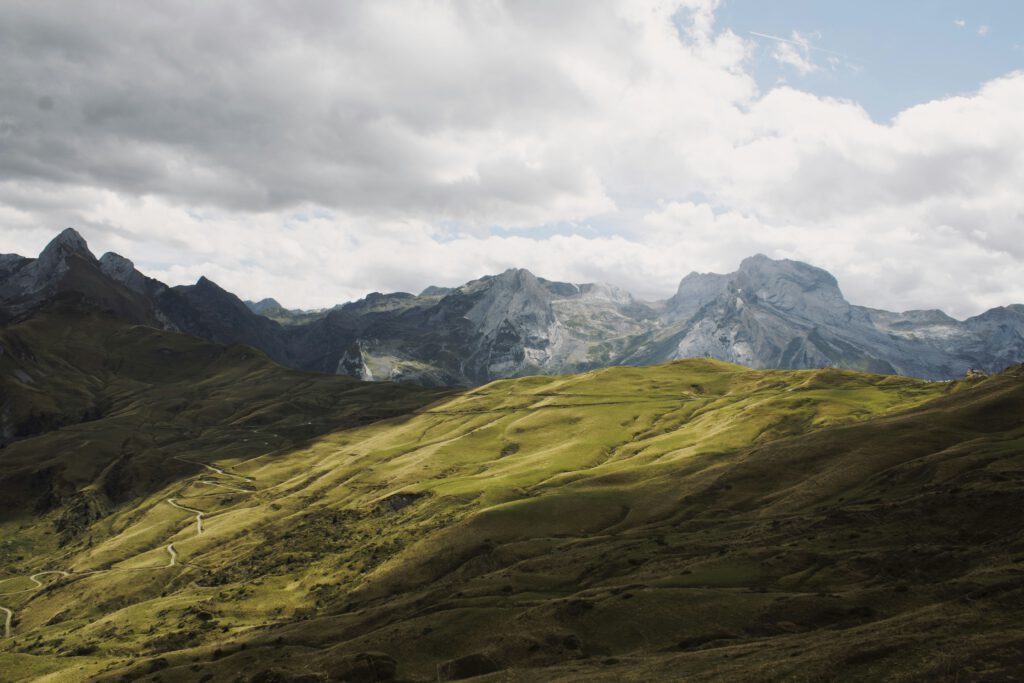
6. Col du Télégraphe
The north face of the Col du Télégraphe is now typically one of those climbs that cannot be done without another. This relatively short but vicious climb is the classic prelude to the Col du Galibier. Consequently, this climb does not always count for mountain points, but is then considered part of the Galibier. Of the more than 30 times the mountain has been conquered in the Tour de France, it only counted for the polka dot jersey 18 times. Still worth mentioning, as it is a classic col in the Alps.
7. Col du Galibier
For the first time, Galibier was climbed in the Tour de France in 1911. It was the favourite climb of the inventor of the Tour de France, Henri Desgrange. There is a monument to his memory on the south face of the birch. In 2011, the stage finish was on the Col du Galibier. Andy Schleck won this memorable stage after a 60-kilometre solo that marked the highest finish ever in the Tour de France!
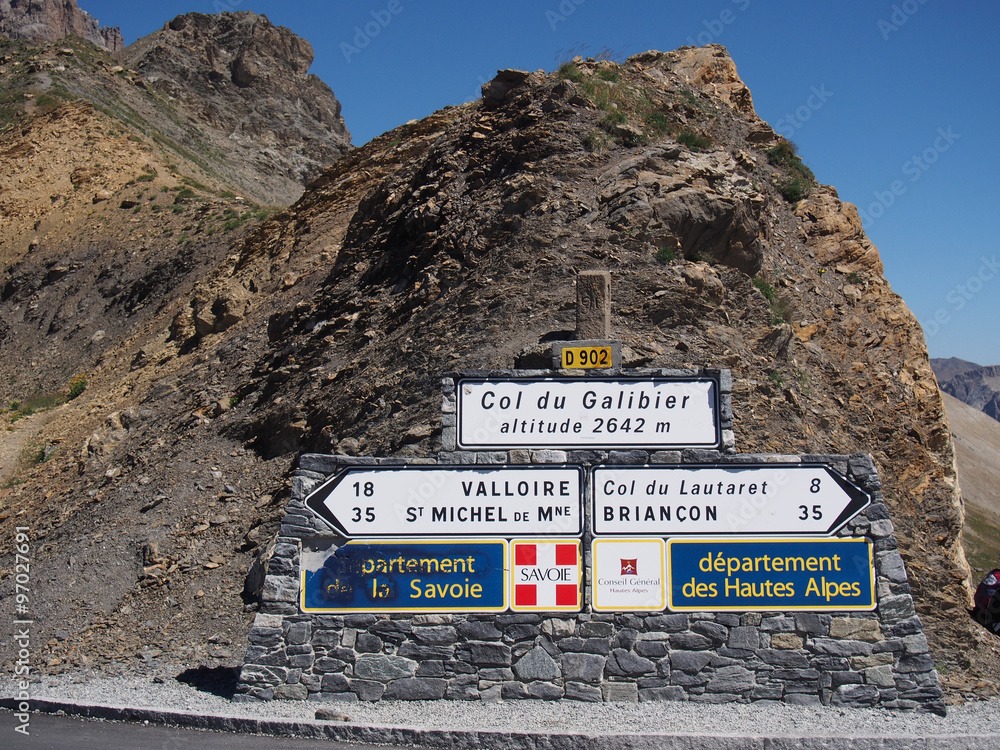
8. Col de la Colombière
In the Tour de France, this climb is often used as a transition pass. The last kilometre is ideal for attacking to start the descent with a lead. Although this climb is not enormously high, it is technically difficult. In particular, the north face of the climb, from Scionzier is a running climb that gradually gets steeper and steeper. The devil of this climb is therefore in the last 5 kilometres where the average percentages do not go below 9%. At over 10%, the last kilometre is the steepest part, so it is important to classify this climb properly.
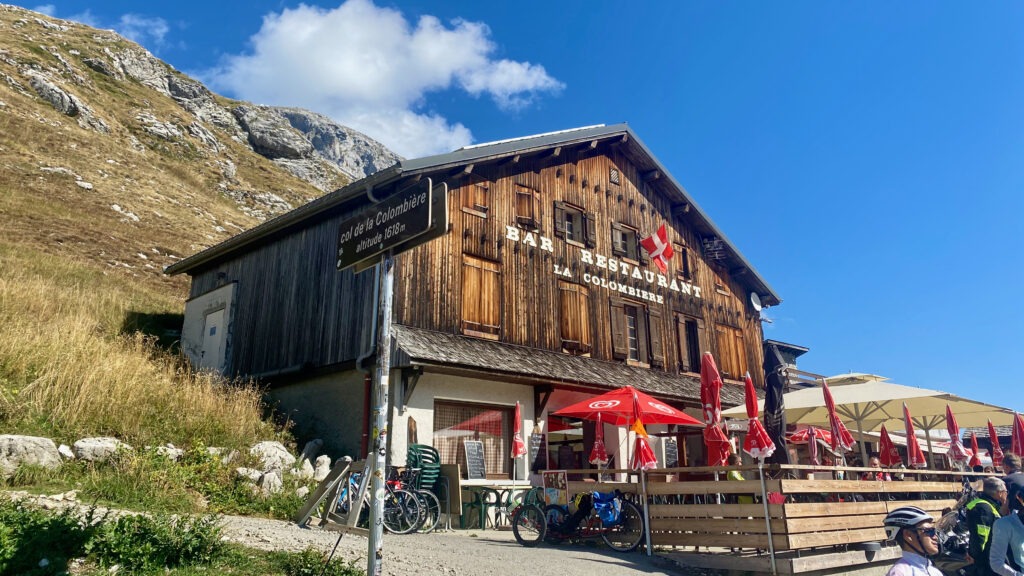
9. Col de Peyresourde
The Tour de France has crossed this climb 45 times since 1947, so it definitely belongs in the list of legendary Tour de France climbs. The 10th stage of the 1998 Tour de France caused havoc in the peloton thanks in part to the final climb over the Peyresourde. As many as seventeen riders did not make it to the finish thanks to the work of Rodolfo Massi, who we later learned to know as the Pharmacist of the peloton.
The Peyresourde climb is not an out-of-category climb; most lap books refer to it as a first-category climb. This is mainly due to the limited height and 'limited' gradient of the climb. This climb can be done from two sides; a short climb from Armentuele (8km at 7.6&) and a long climb from Bagnères-de-Luchon (15km at 6.1%). From either direction, the climb is doable for average-trained cyclists. It is a fine runner that hardly rises above 9%. An ideal climb for cycling, then, for cyclists who like climbing but don't fancy too high a gradient.
10. Col d'Aspin
In the 1950 Tour de France, there was quite some consternation on this pass during the stages from Pau to Saint-Gaudens. The French supporters who had gathered on the climb were rather wanton towards foreign riders. The Italian riders in particular suffered, stones and bottles were thrown towards them and the road was obstructed. Consequently, at the end of the stage, the entire Italian team boarded the train home, thus the Tour de France lost one of its great contenders that year, Gino Bartali. In total, the Tour de France caravan has crossed the Aspin over 70 times over the years, making it one of the most climbed passes in the Tour. The Col d'Aspin is of course famous for the legend of Eugène Christophe's front fork.
If you want to climb the mountain yourself, there is an easy and a difficult side. The easy side starts from Sainte-Marie-de-Campan and lasts 13 kilometres at 5% average. The harder side starts in the village of Arreau and has a length of 12 kilometres at an average gradient of 6.5%. However, these climbs are a breeze compared to the other nearby climbs, such as the Tourmalet and the Peyresourde.
11. Cormet de Roselend
Although this climb has only been included in the Tour route 13 times, there are a number of reasons why it still belongs in this list. First of all, it is a fantastic climb to see, it has a bit of everything, alpine meadows, a reservoir, hairpin turns, places to rest and sections of above 11%. In addition, this climb is not only famous for its climb, but particularly notorious for its difficult descent. The road is narrow and has a number of tricky turns. In the 1996 Tour, Johan Bruyneel was unable to hold one of the tricky corners and fell into a ravine. Miraculously, he survived the fall and was able to finish the stage as normal. So if you want to cycle this climb yourself, pay attention on the descent. Stay safe!
12. Col de Portet-d'Aspet
This climb is not spectacular to cycle up. Nor is it a mountain that is climbed regularly in the Tour de France but it is a legendary one to which the blood of Fabio Casartelli will always be attached. Riders, commentators and cycling fans will never forget the image of Casartelli lying still and every time during the descent of the Portet-d'Aspet there is a few minutes of silence. Out of respect for Fabio Casartelli.
It is an easy climb that gets progressively harder as time goes on. The last 3 kilometres of the climb are the toughest with averages above 10%. The climb from Audressein is 18 kilometres at 3.1% average and the climb from Aspet is 14 kilometres at an average of 4.2%.
13. Puy de Dôme
The Puy de Dôme is a volcano located next to the French city of Clermont Ferrand. In the 1964 Tour, Jacques Anquetil and Raymond Poulidor fought a fantastic battle here. Anquetil, winner of the Tour several times, had a 56-second lead over Raymond Poulidor at the start of the stage in Brive, the only realistic remaining competitor for the overall victory.
The stage finish was atop the Puy de Dôme. Poulidor set the pace during the climb, but Anquetil played a tactical game and did not cycle behind him but defiantly rode alongside him. At the same pace, the same cadence and without looking at him. On the narrow path that can get very steep in places, this was not a comfortable position. Although it may have looked that way it had nothing to do with a surplace, Poulidor gave everything he had to get away from Anquetil, for kilometres they rode there side by side. In the final kilometre, Poulidor, the crowd favourite, finally managed to shake off Anquetil. At the finish, he had built up a 42-second lead, making it look like things were going to get exciting on the final day. Unfortunately for Poulidor, this was a time trial in which Anquetil was lord and master. Anquetil won the Tour by 55 seconds.
Later, on his deathbed, Jacques Anquetil was asked how it felt to have cancer. His answer was both pathetic and beautiful at the same time: 'It feels like cycling up the Puy de Dôme for whole days in a row'.
Today, this mountain is only an attraction for tourists and you cannot go up in a regular car and cycle to the top only at appointed times. Because of the narrow roads and poorly maintained road, the Tour de France will never again conquer this fantastic climb. This is a shame because not only is it the only out-category col in the central massif, it is also a climb where one of the most fantastic battles on the bike took place.
14. Plateau de Beille
Also in 2015, this mountain was included as a finish site in the Tour de France. The climb is one of terrors of the Pyrenees. As the name suggests, it does not concern a mountain peak, but a plateau where, on a normal July day, cattle quietly graze the vast fields. In winter, these fields and the surrounding ridges of hills and mountains are flooded by winter sports enthusiasts, and once every few years the plateau is the epicentre of the cycling world. The caravan descends on the plateau for 24 hours and cycling fans have been camping on the flanks with campers and tents for days. This mountain was first climbed during the 1998 Tour de France, so it is still a relatively new mountain. The finish on this mountain has proved decisive for Tour de France wins on a number of occasions. Both Marco Pantani and Lance Armstrong laid the foundation for their Tour victories here.
For amateurs like you and me, this mountain is a horror and it is good to make the necessary preparation. In 16 kilometres you overcome 1255 altimeters, the average gradient comes out to 7.9%. The climb is very even and is continuously above 7%, this leaves little room to recover, only in the last kilometre you can finally gear up and accelerate if you still feel the need.
15. Col d'Izoard
The Izoard is a true legend; since the start of the Tour de France, this mountain pass has been included in the Tour route 33 times. In the 1950s, duels were fought on the flanks of this mountain that were spread by radio and newspaper. The likes of Fausto Coppi and Louison Bobbet were heroes who were followed and adored from all over Europe. Later, the victors of the Izoard became other great riders such as Merckx, Bahamontes, van Impe and Chiapuchi. At the top of this mountain has never been the finish line, the tour caravan always passing through here. On their way to other places where the heroes finish and are honoured. Their sweat, however, remains forever on the asphalt of the Izoard.
The D902 is the connecting road between Briancon and Guillestre. From these two towns, you can therefore climb this mountain. The north side (from Briancon) is the toughest side to climb, here you can recover the least. The south side (from Guillestre) is a lot longer, but a few kilometres before the summit the road flattens out so you can recover well.
16. Col de la Croix-de-Fer
The Croix de Fer is a mountain that has been included in the Tour route a total of 16 times. The first time was in 1947, when Italian Fermo Camellini crossed the summit first. The last time this giant was conquered was in 2012.
The Col de la Croix de Fer (Mountain Pass of the Iron Cross) is one of the most beautiful climbs in the Alps. Famous for its fantastic views and the passage past the reservoir. The col has an altitude of 2067 metres and is a mountain pass between the village of Allemont and the town of La Chambre. The Croix de Fer is 2.5 kilometres from the summit of the Glandon, so if you want to tick off both these mountains in one go, you can easily do so by cycling on for a bit. The Croix de la Fer can be climbed from two sides by bike, but also indirectly via the north side of the Glandon (from La Chambre). If you want to climb the Croix de Fer from the west side, you start in the village of Allemont. The climb on the east side starts in the village of Saint-Jean-de-Maurienne.
17. Port de Balès
Tour de France organisers were looking for new roads in the Pyrenees in 2006. The beaten tracks were well known by now and made for a predictable course. Something new was needed, a surprise for the riders. Through a tip-off, the creator of the Tour de France's route arrived at the Port de Balès. An ideal climb that had never been climbed in a cycling race before. That was no surprise either, as the last five kilometres of the climb were unpaved and almost impassable. No problem for the tour management, who immediately had a number of asphalt roads paved for the riders. So it happened that a new climb could be introduced in the 2007 Tour de France. Since then, it has been a popular col that has been included in the tour schedule four times.
The climb itself is a really tough one. The road is long and and the gradients vary enormously. One moment you are on a short descent, while a few hundred metres further on you find sections of 10%. Here, the secret is to find a good rhythm, but it's not easy. Of course, you can look at it another way. A col with many steep percentages in between which you also have less steep sections to recover completely.
18. Col du Lautaret
The Lauteret is the easiest way to get from Grenoble to Briancon or vice versa. Going from one town to the other requires crossing a ridge anyway, and the Col de Lauteret is at the lowest point of this ridge. Hence, the Tour de France also regularly chooses this pass during a transition stage to get out of the Alps or as a warm-up for steeper cols deeper in the Alps.
The climb is mostly long from both sides (30+ km) but the gradient percentatges are not too bad. A real runner who just keeps going. So also set yourself up for a long ascent, because after every turn, another long stretch of tarmac awaits! The provincial road is wide, has good tarmac and is generally easy to ride on. Be careful of other traffic, though, as they do not always drive as neatly or take cyclists into account.
19. Col du Grand-Saint-Bernard
For a one-off outing, we are heading to Switzerland. The Saint Bernhard Pass is the oldest pass in the western part of the Alps. The Romans and Napoleon used this pass centuries ago to conquer new territories. The pass is named after Bernhard of Menton who founded a monastery here in the 11th century, the monks helped embattled travellers who had lost their way in the dangerous area. The famous Saint Bernard dogs were used to track them down. The Saint Bernard Pass connects the Swiss Val d'Entremont with the Italian Valle d'Aosta. The mountain road is only passable from early June to late October; it is closed during the winter period due to heavy snowfall.
The Tour de France has passed over this pass a total of five times, the 2469-metre mountain was last climbed in the 2009 Tour. If you want to climb this climb yourself take your time, as the climb is over 40 kilometres long! There are many Italian motorbikes (especially on weekends) that use the pass as a racetrack, causing many dangerous situations. So it is best to climb this pass during the week. What makes the climb unique is that you have the opportunity to cycle through the famous snow walls.
20. Col de la Bonette
The Col de la Bonette is the highest point in the French Alps and the highest mountain in France that can be climbed by bicycle at 2802 metres. Indeed, it is the highest point you can reach by bike in all of Europe. As such, it is also the highest point the Tour de France has ever reached. In total, the tour passed here four times. The most notable passage was that of South African Jon-Lee Augustyn. In the 2008 Tour, he was first over the top of the Col de la Bonette, but on the descent he missed a turn and slid dozens of metres down into a ravine. He still climbed on his bike, but he could forget about the stage victory.
21. Col du Glandon
The Col du Glandon has been included in the Tour de France route 13 times. Once a Dutchman was first at the top, Steven Rooks was first to pass the summit in the 1988 stage from Morzine to Alpe d'Huez. He also managed to win the stage afterwards. The last time the Tour de France went over the Glandon was in 2013, during a stage that ended at Le Grand-Bornand. Rui Costa managed to win that stage in his name.
The Col du Glandon can be climbed from two sides, namely from Allemond (south side) and Saint-Étienne-de-Cuines (north side). If you climb the east side of the Col de la Croix-de-Fer from Saint-Jean-de-Maurienne, you can reach the top of the Col du Glandon after a short 2.5-kilometre descent on the right. The road over the Glandon was opened in 1898 and is generally only accessible from June to October.
22. Col du Soulor
The Col du Soulor often forms a pair with the Col d'Aubisque in the Tour de France. The combination of these two climbs, which immediately follow each other, makes a stage extra tough. As a result, stages over the Col de Soulor are quickly declared queen stages. In the 20 times this climb has been taken in the Tour de France, there was one time when there was no fight on the flanks. In 1995, Fabio Casartelli died while descending the Col de Portet-d'Aspet. The following day, the Soulor was climbed in a neutralised fashion. The tour waits for no one but respects its participants.
23. La Ruchère-en-Chartreuse
This climb is not tough, legendary and actually does not even contain a good story. The climb was done once in the 1984 Tour de France. The only fact that makes this climb interesting for this list is that it is the very lowest mountain rated in the outer category. The col is 1407 metres 'low', but was given the extra-low category because the climb was included as an individual climbing time trial. The climbing time trial was won by Laurent Fignon, who laid the foundations for the final victory in Paris here.
You cannot do this climb yourself.
24. Col de l'Iseran
At 2770 m, the Col de l'Iseran is the highest paved mountain pass in the Alps. The Cime de la Bonette is 32 metres higher at 2802 metres, but that is not a pass but just a summit. If we are talking about the highest mountain pass the Tour de France can climb, the Col d'Iseran the ideal bouncer of this list. The Col is named after the area l'Iseran, which in turn is named after the river Isère. That river rises at the bottom of this col in Val-d'Isère. The Tour de France's very first climbing time trial was held on the flanks of the Col d'Iseran in 1939. Starting in Bonneval-sur-Arc and finishing in Bourg-Saint-Maurice, this time trial was won by Belgian Sylvere Maes.
Like all the high cols in this article, this one is particularly long. The climb is over 40 kilometres from either side, but is on a well-paved road. The climb is not really tough and has a maximum gradient of 8.6%, with the average gradient from Bourg Saint Maurice coming out at 4.3%. Because the col is so high, you cannot always climb it, so check carefully whether the col is open when you want to cycle up it.



